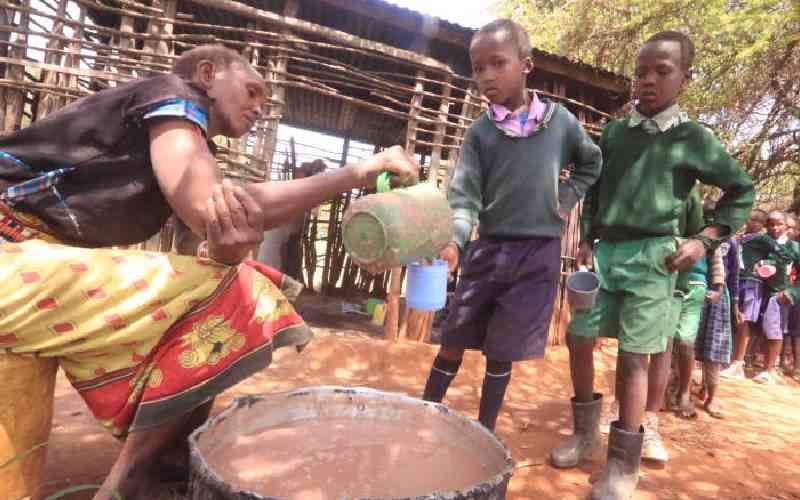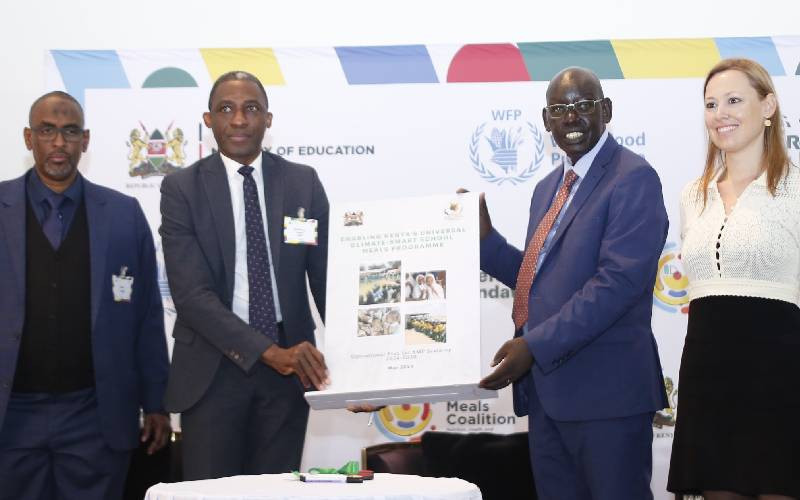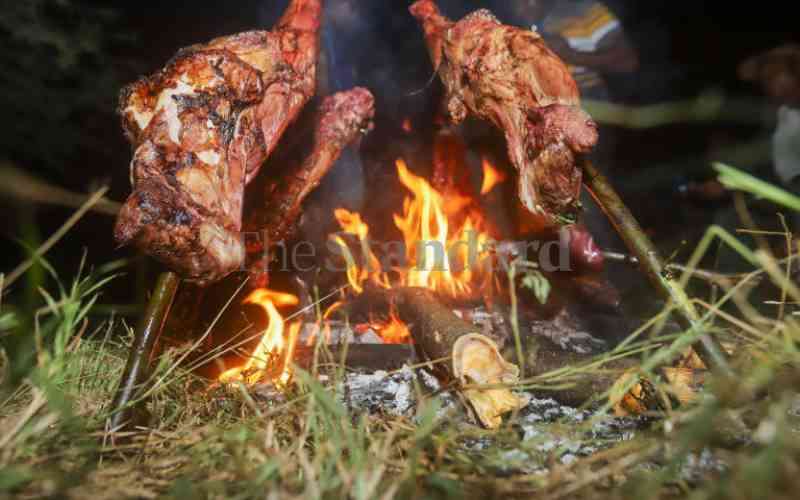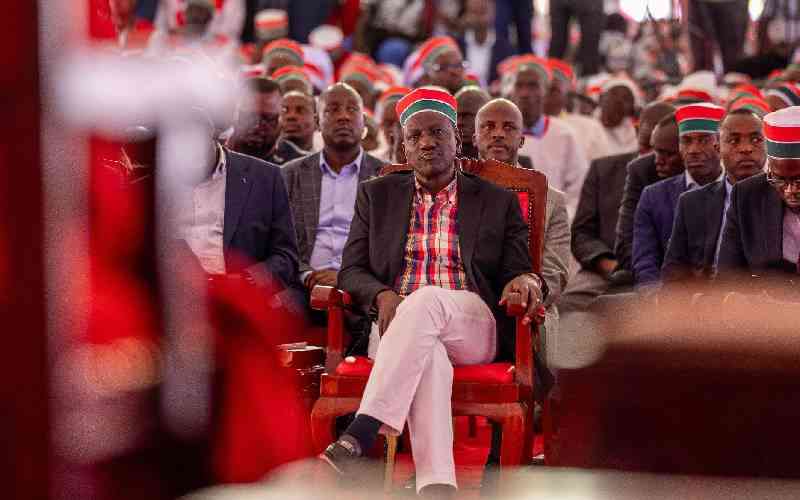
Commonly used unclean cooking fuels like charcoal and kerosene continue to pose serious health risks to millions of people globally despite advancements in cooking technologies.
According to the World Health Organisation (WHO), household air pollution from cooking with solid fuels causes approximately four million premature deaths annually, making it one of the leading health risks globally. Traditional biomass cooking methods contribute about one gigaton of CO2 emissions per year, which is roughly two per cent to three per cent of global CO2 emissions.
Cooking with biomass fuels is also a significant source of black carbon, accounting for up to 25 per cent of global black carbon emissions. Black carbon has a global warming potential many times that of CO2.
Besides the adverse impact on health, households relying on traditional cooking methods spend a substantial portion of their income on biomass fuels.
In sub-Saharan Africa, for example, some families spend up to 30 per cent of their income on cooking fuel, while women and children in many developing countries spend several hours daily collecting firewood.
But clean cooking technologies can significantly reduce this burden, freeing up time for education, income-generating activities, and other productive uses. Technology plays a crucial role in advancing clean cooking solutions by improving efficiency, accessibility, and affordability.
One such technology that is contributing to this advancement is the use of smart meters, which help in monitoring and managing energy consumption more effectively.
Smart meters are central to the Pay as You Cook model, which is key in unlocking affordability for consumer segments that would otherwise not afford liquefied petroleum gas (LPG). The meters also allow consumers to manage their consumption meal by meal besides eliminating mishaps like running out of gas in the middle of cooking. This is possible as they allow for monitoring of how much gas is left and, in turn, enable the company to plan effectively for supply and eliminate downtime where the customer runs out of gas unexpectedly. Another technology revolutionising the way people access and pay for clean cooking solutions is mobile payment systems, whereby users can pay for fuel or cooking services through mobile money.
This reduces the need for cash transactions, making it easier for people in remote areas to access clean cooking solutions. These systems enable pay-as-you-cook models, where users can pay for energy in small increments, making clean cooking more affordable and accessible for low-income households.
The effectiveness of this model is demonstrated by the recent partnership between TotalEnergies Marketing Kenya and M-Gas to scale up the latter’s affordable pay-as-you-cook technology that seeks to impact over one million households annually in Kenya.
Through this collaboration, M-Gas will provide its revolutionary pay-as-you-cook smart meters installed on TotalEnergies’ LPG cylinders, while TotalEnergies will provide the cooking gas. The proprietary smart meter from M-Gas democratises LPG for consumers who otherwise could not afford the upfront cost of buying gas by enabling them to cook a meal with as little as Sh10 via mobile money payments.
The integration of these technologies not only improves the efficiency and effectiveness of clean cooking solutions but also enhances their scalability and sustainability.
By leveraging smart meters, mobile payment systems, and the Internet of Things (IoT), clean cooking initiatives can reach more people, reduce environmental impact, and improve public health outcomes.
However, implementing these technologies requires reliable infrastructure, which may be lacking in some regions.
Stay informed. Subscribe to our newsletter
There is also the cost implication, whereby the initial cost of smart meters and IoT devices can be high, necessitating financial support or subsidies for widespread adoption.
At the same time, users need to be educated on how to use these technologies effectively, which requires customer education. Collaboration between the public and private sectors is, therefore, crucial for addressing energy challenges due to the complementary strengths and capabilities each sector brings to the table.
This synergy can drive innovation, ensure financial sustainability, and promote equitable access to energy solutions.
Financiers should continue to drive investment in clean cooking in the continent to fuel growth and expansion ambitions. The governments, on the other hand, must continue to play a pivotal role in helping shape policies that enable an environment where clean energy is accessible to the masses.
The government’s LPG growth strategy is one great example of how it is supporting clean cooking across homes in the country, thus enabling the private sector to thrive in expanding access to cleaner energy like LPG.
While these efforts are commendable, the State needs to allocate significant funding for large-scale energy projects, subsidies, and grants, with private sector players investing in research and development (R&D), infrastructure, and the scaling up of innovative technologies.
The success of our partnership with TotalEnergies as well as another ongoing one with leading telco Safaricom, which aims at eliminating the upfront cost of acquiring an LPG cylinder, is a good example of how private entities can support the government’s clean energy strategy, especially the adoption of LPG by rural and low-income urban households.
Economically, clean cooking leads to cost savings, increases productivity, creates economic opportunities, and promotes gender equality. By addressing these critical areas, clean cooking can contribute to sustainable development and the overall well-being of communities in Kenya and around the world.
 The Standard Group Plc is a
multi-media organization with investments in media platforms spanning newspaper
print operations, television, radio broadcasting, digital and online services. The
Standard Group is recognized as a leading multi-media house in Kenya with a key
influence in matters of national and international interest.
The Standard Group Plc is a
multi-media organization with investments in media platforms spanning newspaper
print operations, television, radio broadcasting, digital and online services. The
Standard Group is recognized as a leading multi-media house in Kenya with a key
influence in matters of national and international interest.
 The Standard Group Plc is a
multi-media organization with investments in media platforms spanning newspaper
print operations, television, radio broadcasting, digital and online services. The
Standard Group is recognized as a leading multi-media house in Kenya with a key
influence in matters of national and international interest.
The Standard Group Plc is a
multi-media organization with investments in media platforms spanning newspaper
print operations, television, radio broadcasting, digital and online services. The
Standard Group is recognized as a leading multi-media house in Kenya with a key
influence in matters of national and international interest.









